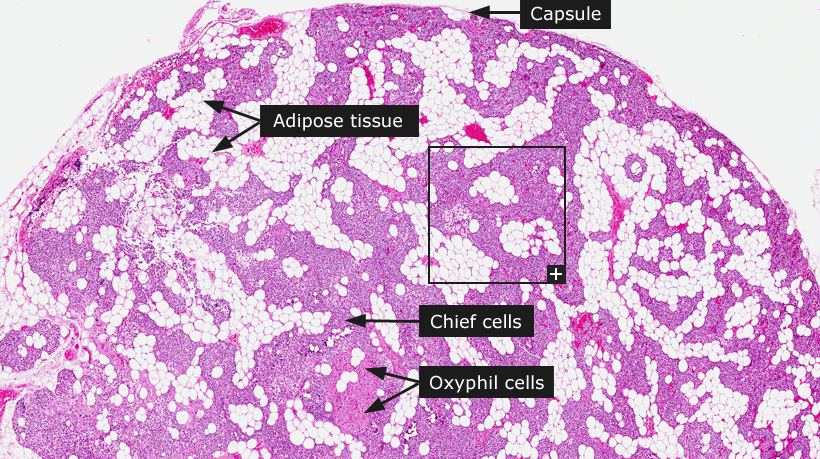DictionaryParathyroid glandParathyroid gland
Parathyroid glandParathyroid glands are highly vascularized endocrine organs located behind the thyroid gland. There are typically four parathyroid glands, each about 5 mm in size and weighing 130 mg, however, the exact number and size of the glands may vary depending on individual. The parathyroid glands produce a hormone called parathormone (PTH) and are involved in calcium blood level regulation. In the low power magnification a round, encapsulated organ is seen. Within the gland there is a lot of adipose tissue and numerous venules, which run through the gland. The parathyroid gland contains two cell types, chief cells and oxyphil cells. Chief cells are the predominant cell type characterised by round nucleus surrounded by scarce cytoplasm. They produce and secrete PTH in response to low extracellular calcium levels detected by receptors in the cell membrane. Larger oxyphil cells with an eosinophilic cytoplasm and a slightly smaller nucleus form clusters scattered between chief cells. The function of the oxyphil cells is unknown. |